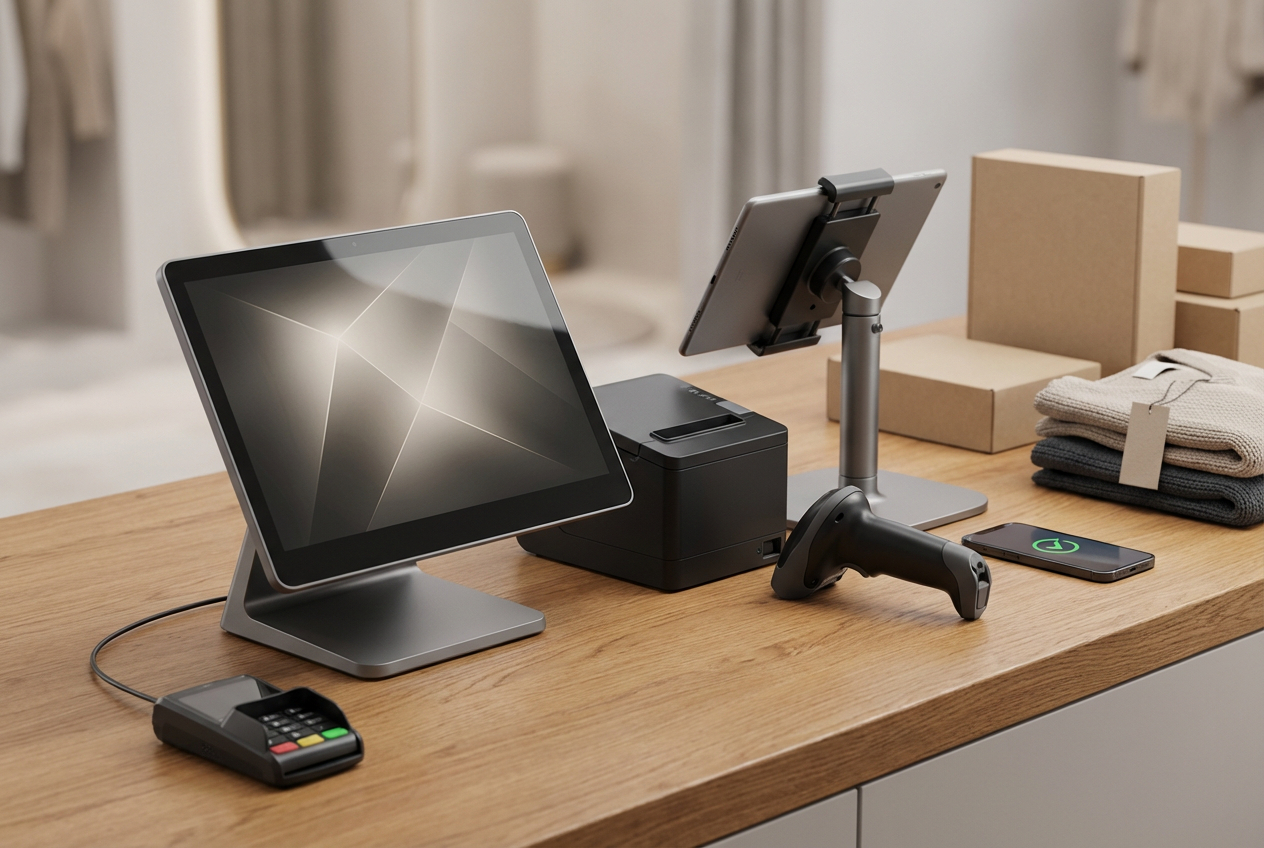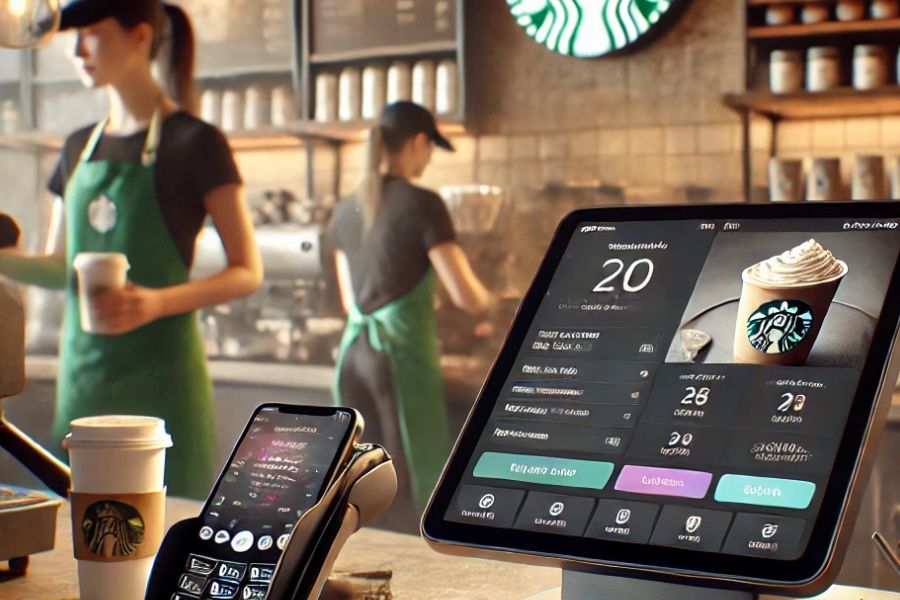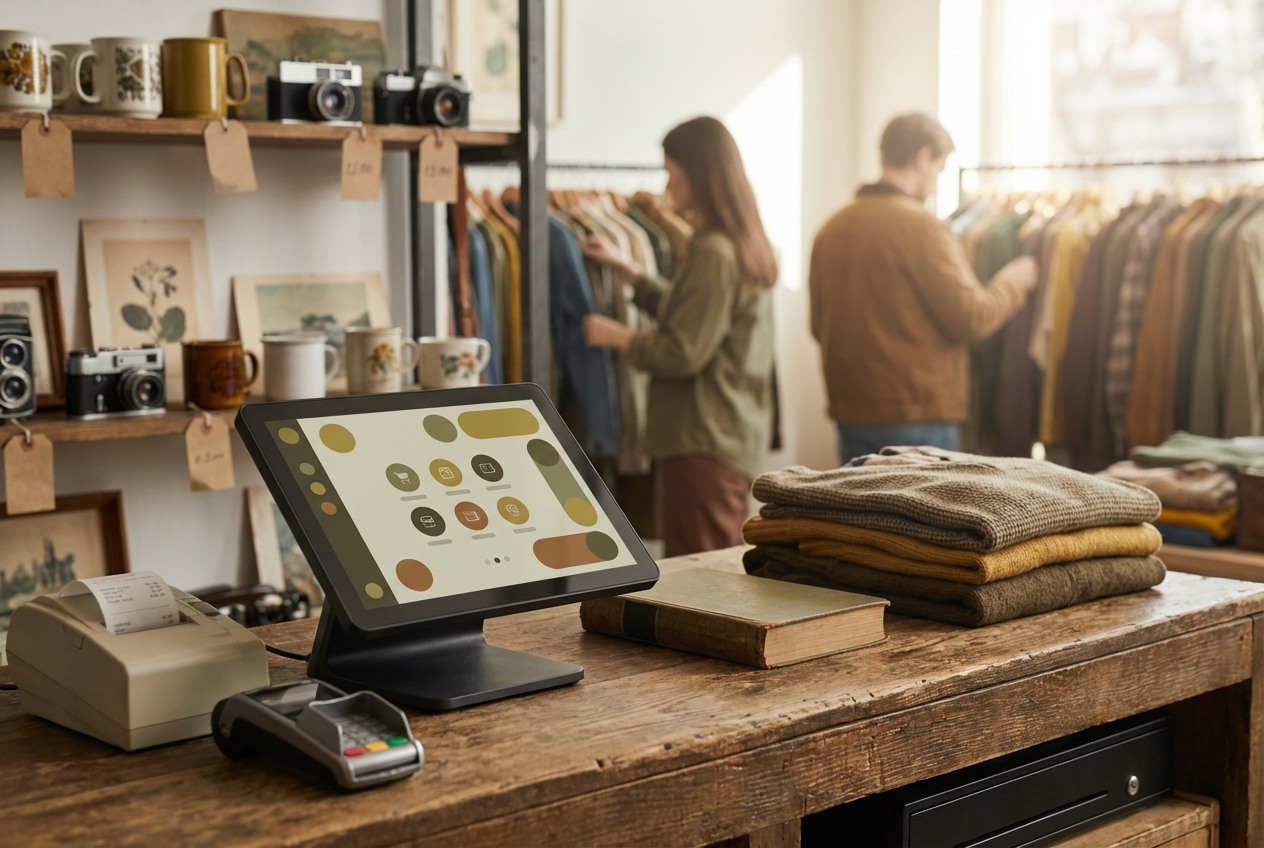Managing an antique store is not the same as running a typical retail shop. While antique stores possess their own charm, they also come with unique challenges. You are working with one-of-a-kind treasures, delicate heirlooms, and items that have their own stories. Each item is priced and valued differently. Without the right antique store POS system, ensuring smooth operations can quickly become stressful.
Highlights:
- It’s time to consider a POS upgrade when your system can’t handle vendor sales cleanly, inventory tracking feels like guesswork, or online orders keep slipping through the cracks.
- Upgrading lets you track unique inventory in real time, clean up vendor reporting, and run both in-store and online sales without juggling separate systems.
Unique Characteristics of Antique Stores
First off, antique stores aren’t selling mass-produced goods. Every item is unique, and often, it’s impossible to reorder or replicate. If a customer loves something and it sells, that’s it. The inventory never repeats itself exactly.
Then, there’s the delicate nature of your inventory. Antiques aren’t just old. They’re fragile. A chipped vase or scratched furniture can mean huge financial losses, so handling products carefully is non-negotiable.
And let’s not forget pricing. Antiques often need appraisals, and pricing isn’t straightforward. Two seemingly similar items can vary wildly in value based on age, condition, or even a tiny detail in craftsmanship.
Common Problems Faced by Antique Stores
With a product range that’s always shifting and rarely similar, inventory management becomes a chore. Tracking items manually is frustrating and error-prone. Stock mistakes aren’t just inconvenient, they’re costly. According to McKinsey, Inventory shrinkage caused US retailers to lose more than $110 billion in 2022. Misplaced items, incorrect price tags, or unsynchronized inventory lists can directly affect your profits.
Pricing and appraisals also eat up a ton of your time. Figuring out how much each item is worth manually means hours spent researching, adjusting, and re-tagging. It’s tedious work, and it takes you away from interacting with customers and actually making sales.
Integrating online and offline channels adds another layer of difficulty. Many antique shops now sell both in-store and online, but managing two separate inventories feels like double the effort. When one-of-a-kind pieces sell online, your store needs to reflect that immediately to avoid double-selling or disappointing customers.
Clearly, antique shops have special requirements, and the usual retail software doesn’t always cut it. Upgrading your antique store POS system might just be your ticket to fewer headaches and more free time.
7 Reasons Upgrading Your Antique Store POS System Saves Time
1. Streamline Unique Inventory Management with Real-Time Tracking
Every antique item you sell is unique. So why handle them with generic inventory methods? An upgraded antique store POS system provides real-time tracking. This means every sale instantly updates inventory. No more guessing if an item is still available or wasting time hunting it down in the backroom.
Real-time inventory ensures accuracy. You’ll know exactly what’s available, what’s sold, and what needs restocking, and with report & analytics tools built in, the numbers stay crystal‑clear. Yet only 4 percent of retailers report achieving perfect inventory accuracy across channels. That alone can save hours each week on inventory checks.
►►► Optimal solution set for businesses: Multi store POS, Next-gen POS, Inventory Management Software (MSI), Self Service, Automation, Backorders
2. Simplify Multi-Vendor Sales Tracking and Reporting
Many antique stores sell items from multiple vendors. This can quickly turn messy if your POS system can’t handle different vendors smoothly. With a better POS, ideally a flexible Custom POS setup, sales tracking per vendor becomes automatic.
No more manual logs or complicated spreadsheets. Reports are easy, accurate, and immediately accessible. Vendors stay informed, and you spend less time managing paperwork.
3. Enhance Customer Experience with Integrated Online and In-Store Sales
Antique shoppers often browse online first, then visit your store to see pieces up close. A seamless online and offline integration helps avoid confusion about availability. That matters, because, according to GE Capital Retail Bank, 81 percent of retail shoppers research items online before buying in store. If something sells online, your store instantly reflects this.
Customers appreciate accurate information. They trust your store more, leading to better reviews and repeat visits. You spend less time managing inventory across two channels and more time focusing on customers.
4. Automate Inventory Tasks to Save Time
Automating routine inventory tasks frees up valuable hours. Instead of manually updating records, your POS system can handle this automatically. It alerts you when items sell, when stock is low, or even when specific products arrive in-store.
According to a McKinsey Global Institute report, at least 30% of activities in 60% of occupations could be automated using current technology. This lets you spend your time sourcing unique antiques instead of fixing inventory mishaps.
5. Gain Insights with Detailed Sales and Profit Reports
A smarter POS doesn’t just track sales; it provides detailed insights into what’s selling and what’s gathering dust. By clearly showing your best-selling items and slow movers, your inventory management becomes smarter, not harder.
Detailed reports guide your purchasing decisions, helping you invest in the right items. Less guessing means fewer hours wasted on inventory that doesn’t move.
6. Manage Consignment Sales Efficiently
Many antique stores rely heavily on consignment sales. Without a robust system, managing these sales can be cumbersome. A POS built for antiques simplifies the consignment process, clearly tracking items from different consignors, calculating commissions, and generating accurate payouts.
No more manually reconciling sales and payouts. Everything happens automatically and transparently, saving you countless administrative hours.
7. Facilitate Seamless Checkout with Mobile POS Solutions
An upgraded POS with mobile capabilities makes checkout a breeze. Your staff can ring up sales from anywhere on the shop floor with a mobile POS, reducing long lines and wait times. It’s a shift already underway. Over 60% of retailers now run on cloud‑based or mobile POS platforms, and studies show contactless checkout can trim transaction times by roughly 25 %. It’s especially helpful during busy weekends or pop-up events.
A faster checkout keeps customers happier. And shorter lines mean your team can assist more customers, instead of getting tied down at the register.
Upgrading your antique store POS system isn’t just about tech. It’s about reclaiming your time and improving your customers’ experience.
Why ConnectPOS is the Ideal Upgrade for Antique Stores
Next‑gen POS platforms like ConnectPOS aren’t your usual retail POS systems. It’s tailored specifically for antique stores, built around the quirky, charming needs of shops offering rare and unique items.
Here’s why it fits so seamlessly:
- Real-Time Inventory Sync: Whether your shop carries just a handful of collectibles or hundreds of antiques, ConnectPOS instantly updates inventory across every channel. Gone are the days of inventory mix-ups and awkward apologies to customers who expected something that was no longer available.
- Supports Unique, Non-Barcoded Items: Many antiques simply don’t have barcodes. ConnectPOS lets you effortlessly create and manage custom SKUs. This makes handling rare furniture or vintage accessories that don’t fit the typical retail mold quick and painless.
- Multi-Vendor and Booth Tracking: Perfect for antique malls or spaces shared among multiple vendors. Track sales accurately by booth, vendor, or item. Splitting commissions, calculating rents, or managing vendor payouts happens smoothly and swiftly, saving you countless administrative hours each month.
- Flexible Checkout, Anywhere: Forget being stuck behind a counter. ConnectPOS works flawlessly on tablets and mobile devices, allowing your staff to finalize transactions right on the shop floor. It’s especially convenient during pop-up markets or special events.
- Detailed Reporting and Analytics: Want to know exactly what’s selling, when it’s popular, and who’s buying? ConnectPOS provides straightforward, detailed reports. No more endless spreadsheet sessions, just clear, actionable insights that let you make smarter business decisions.
- Built-In Loyalty and Promotions: Easily create customized discounts, seasonal campaigns, or loyalty program POS rewards without needing separate apps. ConnectPOS helps build stronger customer relationships, encouraging repeat visits and happier patrons.
- Works Offline: Even if the Wi-Fi drops out, you don’t miss a beat. ConnectPOS continues processing sales offline, syncing data automatically as soon as you’re back online. Your store keeps running smoothly, no matter what.
- Customizable for Vintage Needs: Need special appraisal fields or unique customer tags? ConnectPOS adjusts effortlessly to handle these unique requirements. It’s designed to match your store’s particular needs, no matter how specialized.
- eCommerce Ready: ConnectPOS integrates effortlessly with platforms like Shopify POS, BigCommerce POS, Magento POS. Selling in-store and online becomes seamless without extra hassle or added complexity.
FAQs: Antique Store POS System
1. How can upgrading my POS save me hours each week?
An upgraded POS simplifies inventory management, checkout, and reporting, drastically cutting the hours spent manually tracking items and sales.
2. Will a new POS system integrate with my current online store?
Yes, modern POS systems like ConnectPOS seamlessly connect with most online sales platforms, ensuring smooth and unified management of all your sales channels.
3. Does a POS upgrade require extensive training?
Typically, no. Modern POS systems are intuitive and straightforward, requiring minimal training, allowing your staff to adapt quickly and easily.
4. Can I manage consignment and vendor commissions with a new POS system?
Yes. A modern POS like ConnectPOS lets you track sales by vendor, split commissions, and generate reports automatically, no more manual spreadsheets or math errors.
5. What if my internet goes down during a sale?
ConnectPOS works offline, too. You can keep selling without interruption, and all data syncs once the connection is restored. No delays, no lost sales.
Final Thoughts
Upgrading to a specialized antique store POS system is a decision to save valuable time, improve accuracy, and offer an unbeatable customer experience. It’s the kind of move that turns everyday headaches into smooth, repeatable processes. No more second-guessing inventory. No more manual vendor reports. Just clean, connected systems that actually make your day easier.
With ConnectPOS, your antique store gains the ideal partner: efficient, adaptable, and perfectly suited to your unique business. Whether you’re managing fragile heirlooms, rotating vendor booths, or syncing online and in-store sales, ConnectPOS handles it without breaking a sweat.
Want to see it in action? Get in touch with us today and find out how ConnectPOS can fit your antique store like a glove.
►►► Optimal solution set for businesses: Shopify POS, Magento POS, BigCommerce POS, WooCommerce POS, NetSuite POS, E-Commerce POS



